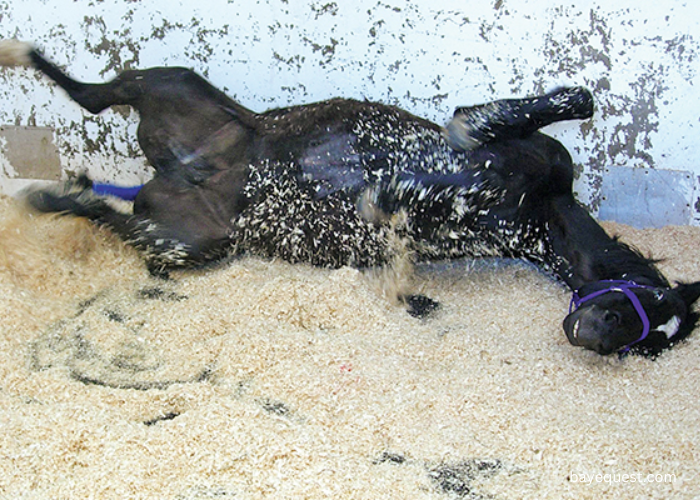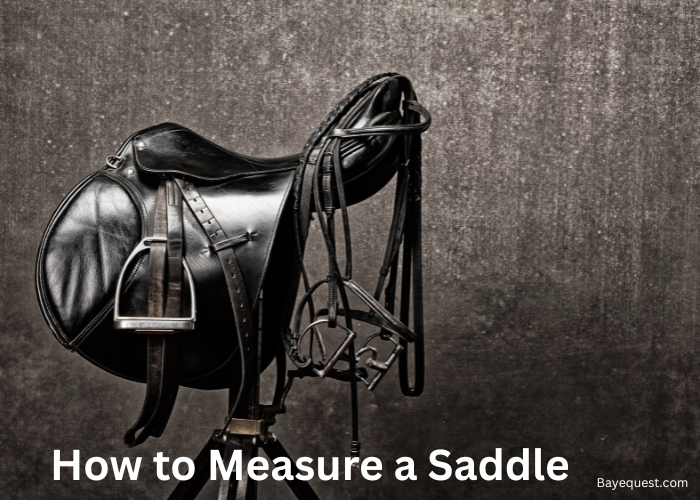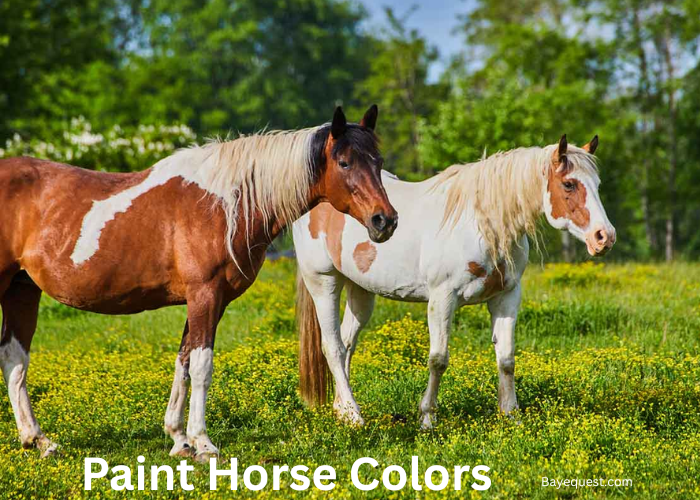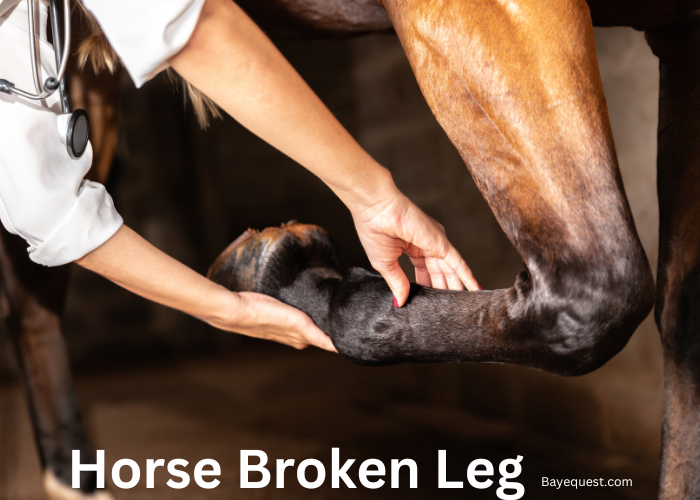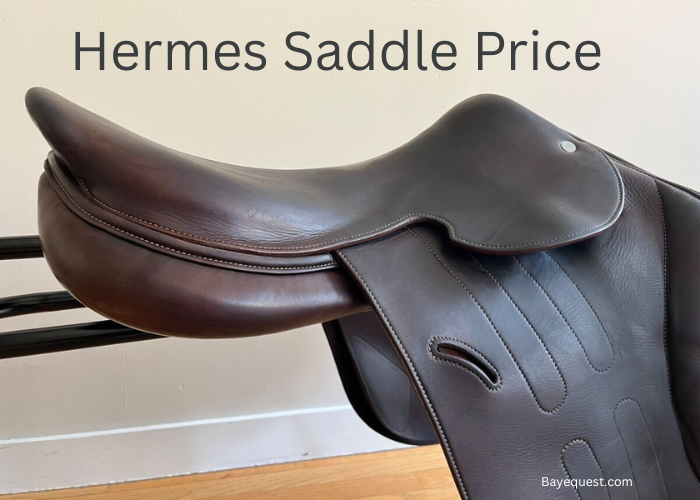A cast horse is more than just stuck. It’s a serious problem that can lead to injury and stress.
Horses can become cast when they lie down or roll too close to a wall. They may struggle to get up and panic, making things worse.
Acting fast is important to prevent harm. In this blog, you’ll learn what it means when a horse is cast, why it happens, and how you can help.
You’ll also discover ways to prevent it and keep your horse safe.
What Does it Mean When a Horse is Cast? Key Takeaway
A cast horse is a horse that gets stuck while lying down, often unable to stand due to being too close to a wall or barrier. This can lead to injury or health issues. You need to take quick action to help the horse up and prevent further harm. Proper stall setup can reduce the risk.
What is a Cast Horse?
A cast horse is a horse that gets stuck while lying down and is unable to get back on its feet.
This usually happens when the horse rolls too close to a wall, fence, or other barrier. Its legs become trapped in a position that prevents it from standing up.
Horses often lie down to rest or roll to scratch their backs, but if they get too close to a confined space, they can become cast.
This situation is dangerous because the horse can panic, injure itself, or suffer health issues if left in this position for too long.
Why is Being Cast Dangerous for a Horse?
Being cast is dangerous for a horse because it can’t get up on its own, leading to serious health risks.
When a horse is stuck, pressure builds up on its muscles and organs, cutting off circulation.
This can cause nerve damage or even permanent injury if left too long. The horse may panic and thrash, increasing the risk of broken bones or other trauma.
Additionally, being cast can cause stress and exhaustion, further weakening the horse. To prevent long term harm, you need to take quick action.
Common Reasons Horses Become Cast
Horses can become cast for a various reasons, often related to their natural behavior or their environment.
Here are some common causes:
Rolling too close to walls or fences. Horses often roll on their backs to scratch or stretch, and if they’re near a barrier, they may get stuck.
Tight or narrow stalls. In small spaces, it’s easier for a horse to accidentally trap itself against a wall.
Weak or injured horses. Horses that are already weak or recovering from injury may struggle to get up and accidentally become cast.
Soft bedding. Thick or uneven bedding can make it harder for a horse to get traction when trying to stand.
Signs That a Horse is Cast
Here are the common signs that a horse is cast:
1. Struggling or thrashing. A horse that is cast will often struggle to get up, kicking its legs or thrashing against the ground or walls.
2. Lying on its side. If the horse is on its side with its legs pressed against a wall or fence, unable to move, it’s likely cast.
3. Heavy breathing or distress. A cast horse may appear panicked, with rapid breathing and signs of stress or exhaustion.
4. Unusual noises. You might hear banging, kicking, or other sounds of struggle coming from the stall.
5. Inability to stand. Despite attempts to rise, the horse is unable to get back on its feet, indicating it’s stuck in place.
What to Do if Your Horse is Cast
If your horse is cast, the first thing you need to do is stay calm and assess the situation.
Your safety is the top priority, so approach the horse slowly and carefully to avoid spooking it further.
A panicked horse can thrash around, increasing the risk of injury to both itself and anyone nearby.
Next, call for help if needed. If the horse is large or you’re unsure how to handle the situation, getting assistance from someone experienced is a good idea.
Horses are heavy and unpredictable, so having extra hands can make a big difference.
To help free the horse, gently use a lead rope. Loop it around the horse’s legs, ensuring you don’t hurt it, and carefully pull the horse away from the wall or fence.
The goal is to give the horse enough space to roll over and stand up without getting stuck again.
Once the horse is free from the barrier, guide it to roll over and encourage it to get back on its feet.
Most horses will instinctively try to stand once they feel they have enough room to do so.
After the horse is up, take a few moments to check for any signs of injury or distress.
If anything seems off, or if the horse has been cast for a prolonged period, call a vet immediately for a thorough examination.
How to Prevent Horses from Getting Cast
Preventing horses from getting cast involves making a few changes to their environment and daily routine. One of the most effective ways to reduce the risk is by ensuring the stall or stable is properly designed.
Spacious stalls give the horse more room to roll without getting too close to walls, which is a common cause of getting cast.
Adding anti-cast rails, which are bars installed around the lower part of the stall walls, can also help.
These rails give the horse something to push against if they do find themselves in a tight spot.
Keeping the stall clean and free of obstacles is another important step. If a horse rolls and encounters loose items like buckets or bedding, it can get tangled and stuck.
Soft or uneven bedding can also make it harder for the horse to regain its footing, so make sure the stall floor is level and, the bedding isn’t too deep.
Also, regularly monitor your horse, especially during rest periods when they’re more likely to roll or lie down.
Horses that are weak, injured, or older are more prone to becoming cast, so they need extra attention.
Checking on the horse frequently or installing a camera in the stall can help you catch a problem early, reducing the time a horse might spend in a cast position.
Does Equine Wobblers Syndrome Cause Casting?
Equine Wobblers Syndrome can increase the risk of a horse becoming cast, but it doesn’t directly cause casting.
Horses with this condition have trouble with coordination and balance, which makes it harder for them to get up after lying down.
This lack of control can lead to situations where they accidentally become cast.
Common Myths About Cast Horses
Horses can always get up on their own. A cast horse may be physically trapped and unable to free itself without help.
Only old or weak horses get cast. Any horse, regardless of age or health, can become cast if the environment allows it.
Leaving the horse alone will help it figure out how to get up. A cast horse can become more panicked and injured if left unattended.
Thick bedding prevents horses from getting cast. Excessive or uneven bedding can actually make it harder for the horse to gain traction.
A cast horse will always thrash and make noise. Some horses stay quiet and still, making it harder to notice the problem.
Once a horse is freed, everything is fine. The horse may have sustained hidden injuries or circulation issues that require attention.
Anti-cast rails are a foolproof solution. While helpful, they should be combined with proper stall design and regular monitoring.
Interesting read: What is a Flehmen Response?
Conclusion
A cast horse can face serious risks, but knowing what to do can make all the difference.
Quick action, along with understanding how to safely help, can prevent injury and keep your horse out of harm’s way.
By setting up your horse’s environment to reduce the chances of them getting cast, you’re taking an important step in keeping them safe.
Regular monitoring, proper stall design, and prompt response are key.
With these tips, you can feel more confident in handling the situation and keeping your horse healthy and secure.




